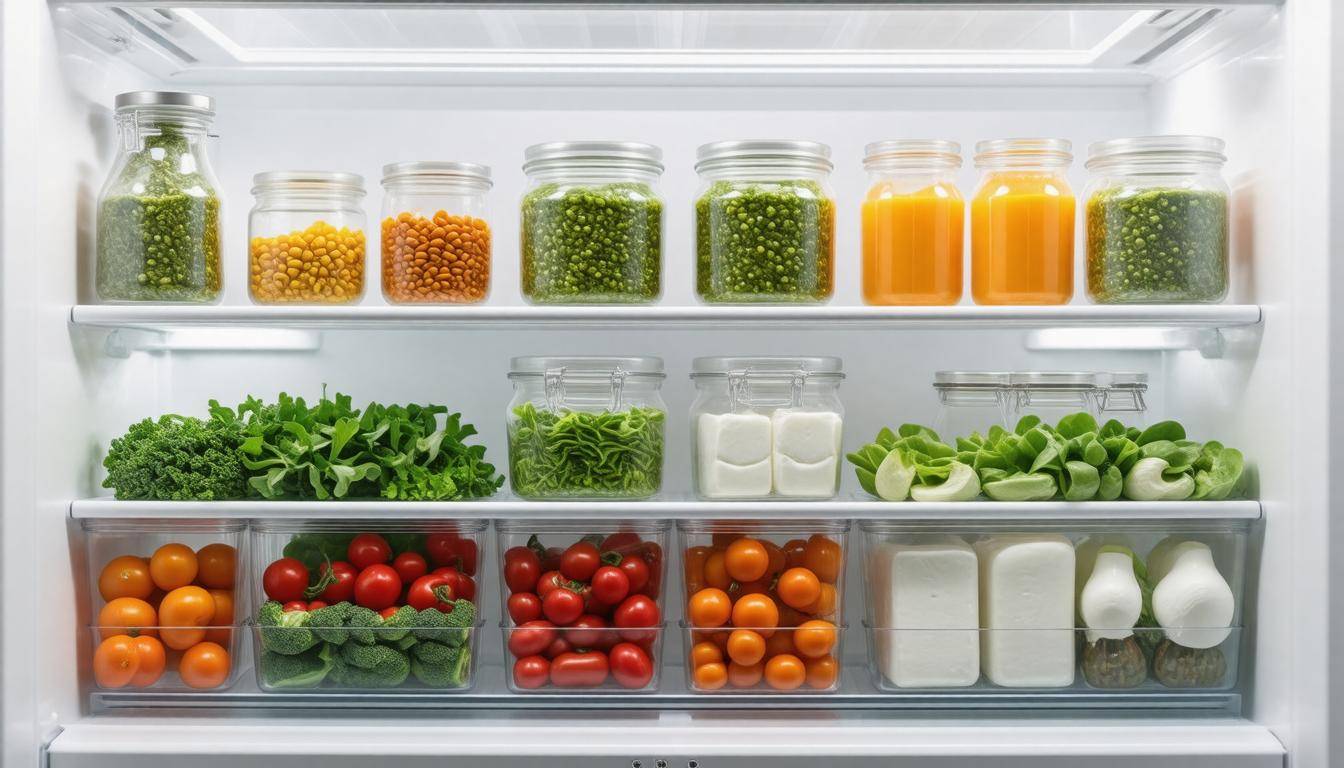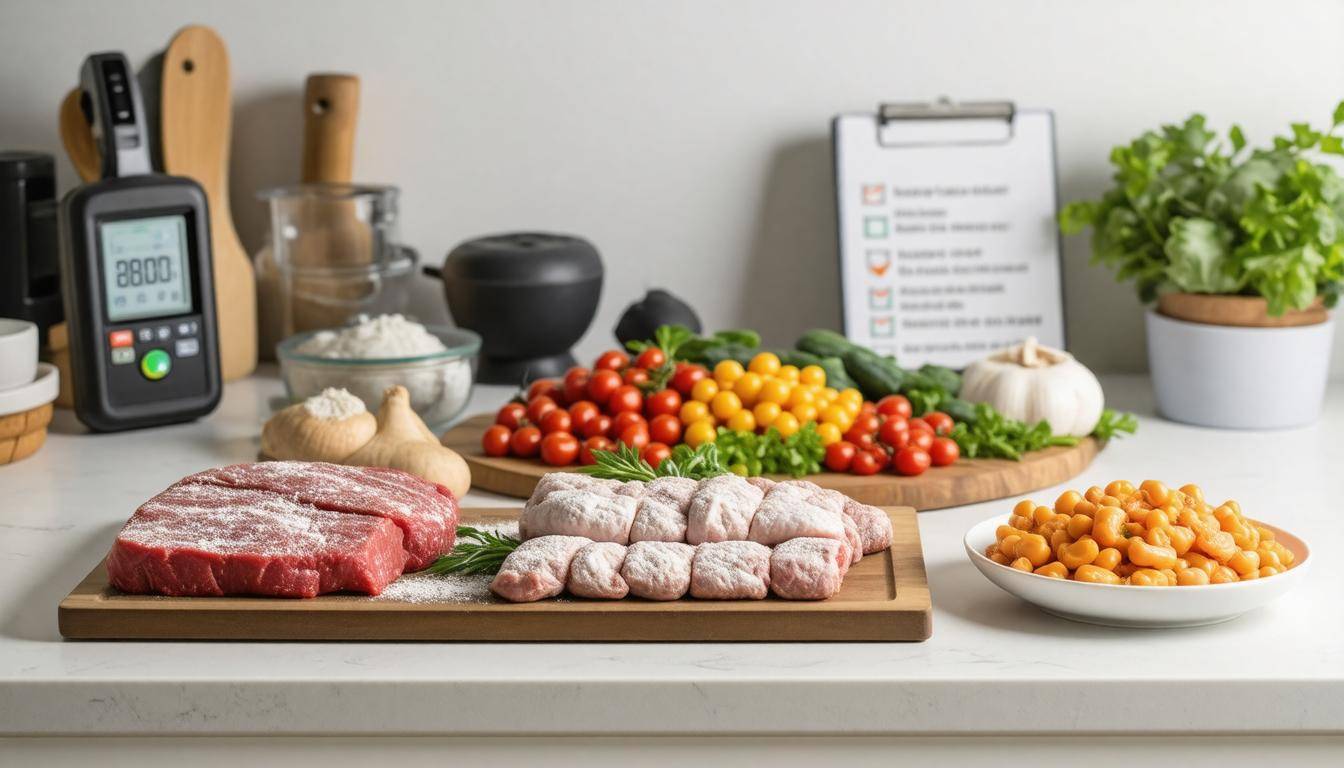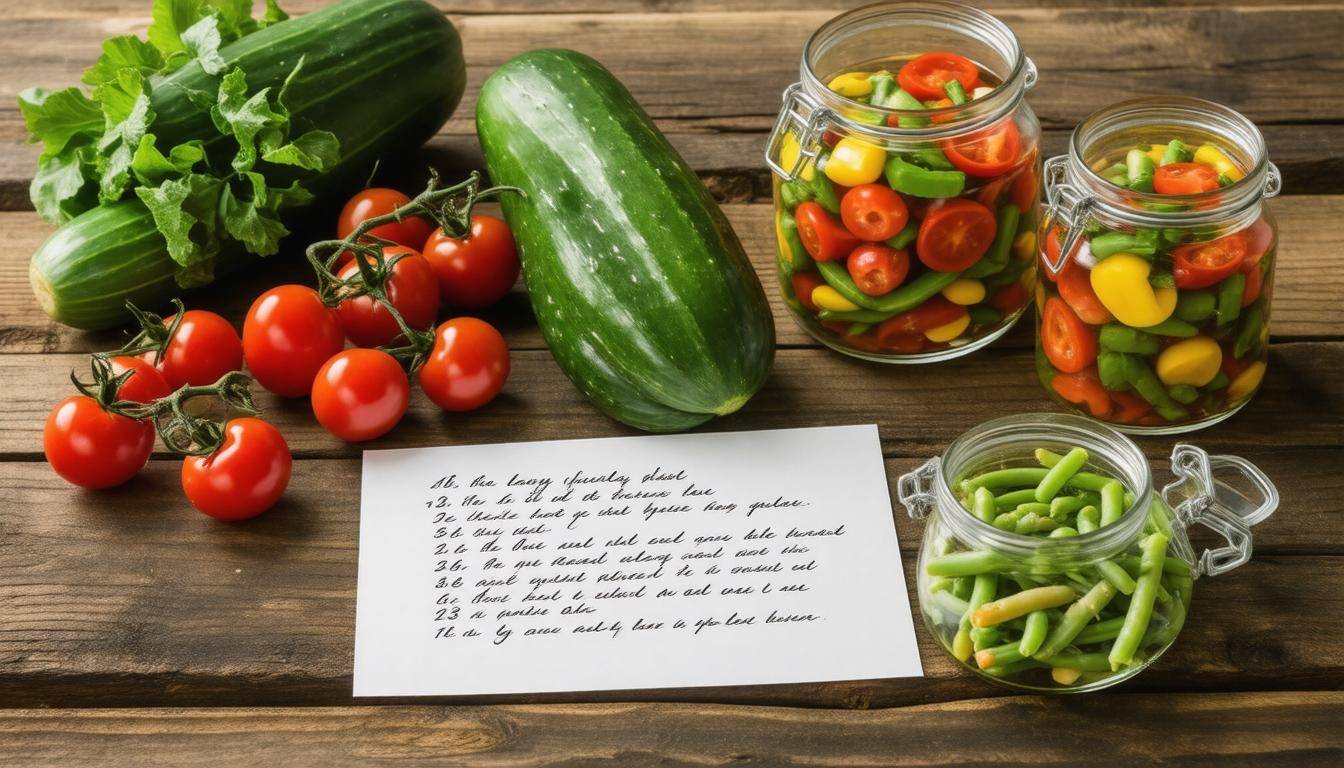Power outages can happen at any time, leaving us with not only the inconvenience of lacking electricity but also a looming question: what will happen to our food? As we scramble to find flashlights and candles, the thought of spoiled groceries often looms larger than the dark. Understanding how to keep perishables safe is key during these challenging moments. With just a bit of knowledge, you can significantly reduce food waste and protect your family against foodborne illnesses. Let’s dive into some essential tips for food safety after a power outage, ensuring that you’re equipped to handle this scenario if it arises.
After a power outage, it is safe to keep food in the refrigerator for up to 4 hours if the door remains closed; however, perishable items like meat, poultry, fish, eggs, and leftovers should be discarded after this period to prevent foodborne illnesses. In contrast, frozen foods can remain safe for approximately 48 hours if the freezer is full and unopened; any food with ice crystals or that has been at or below 40°F can typically be refrozen, although quality may suffer.

Assessing Your Refrigerator and Freezer
The first aspect of assessment involves checking the temperature. By using a refrigerator thermometer, you can have an accurate reading of how well your appliance has been keeping its contents cool. Ideally, your refrigerator should be below 40°F (4°C), while the freezer’s ideal temperature is below 0°F (-18°C). This simple action informs you whether your food has remained at a safe temperature and indicates how effectively your appliances functioned during the outage. Keep in mind that every moment counts: each rising degree could spell disaster for your perishables.
Inspecting Temperature
After checking the initial temperature readings, it’s wise to regularly monitor them during any prolonged outage. If the temperature in your refrigerator is above 40°F for more than two hours, or if the freezer rises above 0°F, perishable foods such as meat, eggs, or dairy are at risk and should be discarded to prevent foodborne illnesses caused by spoiled items lurking in the fridge or freezer.
Once you understand the importance of keeping an eye on temperatures, it’s essential to consider another best practice: managing door usage.
Keeping Doors Closed
When the power goes out, every open door significantly impacts the internal temperatures of both your refrigerator and freezer. The USDA underscores this by advising you to keep those doors shut tightly as much as possible. Think of it this way: every time you open the door, you’re letting that carefully maintained cold air escape, making it that much harder to keep your food safe. A full freezer can typically hold its temperature for approximately 48 hours if unopened; however, if it’s half full, that window shrinks to about 24 hours.
“In these moments, patience pays off; resist peeking inside to preserve that precious chill.”
Another preventive measure includes placing ice packs within your freezer prior to expected outages. These handy packs help maintain lower temperatures longer once the power goes out. Additionally, if you often prepare meals ahead of time and freeze them in advance, you’ll be building a buffer against spoilage during outages.
With our appliances assessed and an understanding of maintaining their integrity settled, we’ll now explore how to identify spoiled food in your fridge or freezer effectively.
Signs of Spoiled Food
Knowing the indicators of spoiled food ensures you don’t accidentally consume anything dangerous. When faced with uncertainty in your refrigerator or freezer, a few telltale signs can help guide you in determining whether to keep or discard items.
Visual Signs
Changes in color and texture are among the first indicators of spoilage. For example, meat typically turns a dull gray or brown when it spoils—a stark contrast to its fresh appearance. Similarly, fresh fruits can show dark spots, while vegetables may exhibit wilting or discoloration. If you spot mold growth on any perishable items, it’s wise to toss them immediately, as even a small amount can be harmful.
Remember: Most spoilage can happen rapidly if food has been kept above safe temperatures for too long.
Smell Test
A strong, unpleasant odor is a clear sign that food has gone bad. Foods like dairy products often give off sour or rancid smells when they spoil. Trust your instincts here; if something doesn’t smell right, it’s better to err on the side of caution. The old adage “when in doubt, throw it out” rings particularly true in these scenarios—foodborne illnesses are no joke.
Texture Changes
Texture changes are equally telling: slimy textures, especially on meats and seafood, often signify spoilage. A fresh piece of chicken should feel firm and smooth; if it becomes tacky or slippery, it’s time to dispose of it. Fruits and vegetables might also become mushy or overly soft, compromising their enjoyable crunch and flavor.
Recognizing spoiled food is crucial for your health. Transitioning to storage methods will enhance your ability to prevent spoilage and ensure food safety during outages while maintaining your kitchen’s efficiency.
Safe Food Storage During Outages
When the power goes out, the most important thing to remember is how to keep your perishables safe longer. Proper storage methods can drastically reduce the risk of spoilage during these stressful times. One effective strategy is putting perishable items such as dairy, meat, and fish into insulated coolers filled with ice packs or frozen water bottles. This simple yet effective method helps maintain a low temperature even when conventional refrigeration isn’t available.
Many people might be surprised to learn that if you keep the cooler tightly closed, it could maintain a safe temperature for several hours, giving you precious time to figure out longer-term solutions.
Beyond using coolers, there are additional tactics you can employ to safeguard your food.
Use of Ice Packs & Coolers
Another vital tip involves preparation ahead of time. Consider freezing some water bottles in advance. Not only do these frozen bottles act as extra insulation within your cooler, but they also provide cold water as they gradually thaw out, offering dual benefits during an outage. If you find yourself with access to dry ice, that can become your best friend as well. A 50-pound block of dry ice can effectively keep an 18-cubic-feet freezer cold for about two days, which is quite invaluable in extended outages.
While keeping food cool is essential, what happens if you have someone nearby who still has power?
Relocating Food
In situations where neighbors are fortunate enough to have electricity, don’t hesitate to consider relocating your perishables there temporarily. This not only keeps your food safe but also builds a sense of community during a challenging time. Additionally, various local organizations may offer emergency food storage systems; tapping into those resources can make a significant difference in preserving your food until normalcy returns. It’s important to know that cooperation makes communities stronger during emergencies.
Storing food is one thing, but understanding the best practices for safely handling it once it thaws is crucial.
Thawing Food Safely
When it comes to thawing food, ensuring safety is key to keeping your family healthy. One of the most effective ways to do this is through refrigerator thawing. This method allows you to gradually bring perishable items to a usable temperature while keeping them below 40°F (4°C), significantly minimizing any risk of harmful bacteria growth.
Imagine pulling out that frozen chicken and placing it in the fridge the night before—by dinner time, when it’s ready for cooking, you’ll have perfectly thawed meat, all while maintaining peace of mind.
Refrigerator Thawing
The beauty of refrigerator thawing lies in its convenience and safety. Just remember that small items like shrimp or ground meat may take less time compared to a large turkey, which could require up to a day or more for full thawing.
It’s best to plan ahead and allow your frozen products ample time to defrost in the refrigerator. If you’re left with leftovers post-thaw, those can typically stay safe in the fridge for an additional one to two days before they need cooking.
For the best results, keep a thermometer inside your refrigerator. Regularly checking ensures that your fridge maintains a safe temperature throughout the thawing process.
Cold Water Thawing
Now, if you’re in a bit of a rush, there’s another method—cold water thawing. This technique involves submerging sealed packages of food in cold water, changing the water every 30 minutes to prevent it from warming up.
Cold water works wonders more quickly than refrigeration because it helps keep the outside surface of the food cool while allowing heat to penetrate more evenly. However, avoid using warm or hot water; doing so opens up your food to uneven thawing and unwanted bacteria growth.
As you prepare to cook after cold water thawing, ensure that any items that have reached room temperature are cooked immediately. It’s crucial not to refreeze this food unless it has been cooked thoroughly first.
With these methods in mind, you’ll want to determine which foods should be prioritized for quick consumption once power returns, minimizing risks associated with spoilage.
Foods to Consume Immediately

In the aftermath of a power outage, your priority should be the perishable items in your refrigerator that are most susceptible to spoilage. The USDA provides clear guidance that helps navigate this tricky situation, particularly emphasizing that some foods simply must be consumed right away to prevent potential foodborne illnesses. Deli meats, prepared salads, and anything categorized as ready-to-eat meals are particularly vulnerable. Their safety cannot be guaranteed after being without power, so consuming them quickly is essential.
Among these, leftover cooked meats such as chicken, beef, or casseroles represent high-risk items due to their moisture content and the ideal conditions they create for bacteria to thrive once their temperature rises above 40°F (4°C). Similarly, creamy dishes like potato salads or coleslaw can spoil quickly. Always be mindful of texture and smell—signs that something has gone amiss.
With that said, the key is to prioritize your consumption based on how long each item has been without refrigeration.
Alongside prepared meals and deli meats, don’t forget to consume dairy products like milk, yogurt, and cheese quickly too. They typically have a much shorter shelf life post-outage compared to other foods. If dairy products have been kept above 40°F for more than two hours, it’s recommended to discard them. This is especially pertinent for items like soft cheeses, which can spoil even faster than harder varieties.
Understanding which foods require immediate attention preserves flavor and ensures you keep health risks at bay during such uncertain times.
Vegetables and fruits can usually last longer than meats and dairy when it comes to safety; however, leafy greens should be eaten swiftly as they have a tendency to wilt and spoil quickly. So perhaps add a fresh salad to your menu for the day!
Prioritizing Food Safety
- Eat perishable prepared meals first.
- Follow with deli meats and any leftovers—think cooked chicken or beef.
- Dairy products come next; if not certain about their status, err on the side of caution.
- Finally, enjoy your fresh produce while still crisp!
Remember: “When in doubt, throw it out!” It’s always better to let go of something that might be risky than compromise your health.
By adhering closely to these guidelines, you’ll feel a sense of reassurance that you’ve done all you can in circumstances that often lie beyond our control. As we continue, it’s crucial to evaluate which items should stay on your shelves post-outage and which ones may need disposal for your safety.
Keeping or Discarding Perishables
Knowing when to safeguard your health by discarding questionable foods is vital, especially in cases of power outages. The USDA offers a straightforward guideline: “When in doubt, throw it out.” This cautionary principle serves as the safest approach to managing your food while navigating uncertainty. Even though it might feel wasteful to toss something that seems salvageable, the risks posed by foodborne illnesses far outweigh the cost of replacing spoiled items.
General Rule of Thumb
Remember, perishable foods should not be above 40°F (4°C) for more than 2 hours. Items exceeding this temperature can harbor bacteria levels that may lead to severe health risks. It’s critical to use a thermometer to check the internal temperature of these foods; if they’ve been kept at an unsafe temperature, it’s best to discard them.
Familiarizing yourself with guidelines like this not only ensures safety but also instills confidence in your ability to make quick decisions under pressure.
Foods Still Safe at 40°F and Below
- Hard cheeses like cheddar or Swiss
- Butter and margarine
- Fresh fruits (except cut ones)
- Bread, rolls, cakes without cream fillings
These items are generally safe even if they experience slightly warmer temperatures for short durations. They show resilience due to their composition, allowing them to withstand brief fluctuations without spoiling immediately. For example, hard cheeses have lower moisture content compared to softer varieties, which gives bacteria less opportunity to thrive.
To further enhance your food safety practices during power outages, consider implementing some preventive measures that can significantly maintain the freshness of your perishables. Understanding these strategies is crucial as we shift our focus on how to best minimize risks associated with foodborne illnesses.
Minimizing Foodborne Illness Risks
One of the simplest yet most effective tactics you can employ to avoid the risk of foodborne illness is hand washing. Before and after handling any food, whether it’s fresh produce or raw meat, it’s crucial to wash your hands thoroughly with warm soapy water. This isn’t just about cleanliness; according to the CDC, proper hand washing can reduce the risk of foodborne illness by up to 50%.
Take a moment to scrub your wrists, the backs of your hands, and under your nails too—it’s worth it for that additional protection.
Hand Washing
Ensure you’re using soap that lathers well. The act of lathering for at least 20 seconds before rinsing off is vital, as this duration is long enough to eliminate germs. If you’re cooking with kids, turning this into a fun song can ensure they remember why it’s important.
In addition to hand hygiene, preventing cross-contamination is essential in your kitchen. This means you should designate separate cutting boards for raw meats and fresh produce. Imagine chopping up gleaming vegetables on a board that also saw some chicken last night; the next meal might carry harmful bacteria that could turn dinner into disaster.
Having different colored boards—or simply labeling them—can significantly minimize these risks.
Prevent Cross-Contamination
After using cutting boards and utensils, be diligent about cleaning them immediately with hot soapy water to keep surfaces devoid of harmful pathogens. For added security, consider sanitizing surfaces afterward with a solution of bleach and water; it’s a small step that makes a big difference.
Now that we’ve got the basics covered on hygiene and surface cleanliness, let’s talk about how you handle defrosting food. Trust me when I say it might seem harmless to leave something out on the counter at room temperature, but it could actually lead to a thriving ground for bacteria if not done right.
With these practices in place, the next focus should be on employing safe techniques for thawing your food, ensuring both quality and safety during unexpected outages.
Defrosting Safety Tips

Proper defrosting techniques are crucial not only for preserving the quality of your food but also for preventing harmful bacteria from taking hold.
When you’re faced with thawing frozen items, it’s key to understand how temperature affects food safety. The critical rule to remember is that perishable items should never thaw at room temperature. This is important because bacteria thrive in warm environments; they can double in number every 20 minutes at temperatures above 40°F (4°C).
Controlled Defrosting
One of the safest ways to defrost frozen food is by using the defrost setting on your microwave. This method is efficient and effective, especially when time is of the essence. However, it’s important to immediately cook the food after microwave thawing, as this process may not eliminate all bacteria present. For example, if you were to thaw chicken using the microwave’s defrost function, follow up by cooking it straight away to ensure any potentially harmful microbes are dealt with properly.
Furthermore, there are other safe methods available that can help maintain a healthy kitchen environment post-outage.
Alternative Defrosting Methods
Besides microwaving, consider transferring frozen items from the freezer to the refrigerator a day prior to cooking—this gradual thaw allows for a consistent and safe temperature throughout.
Utilizing cold water immersion is another method; simply place securely sealed items in cold water and change the water every 30 minutes to keep it cold. This approach can cut down your defrosting time considerably while keeping bacteria at bay.
It may be tempting to set frozen food on the counter or stovetop to speed things up, but resist this urge! Not only does it create an unsafe environment for your food, but you also risk ruining an otherwise perfectly safe meal.
Continuing on this journey towards excellent kitchen hygiene, let’s examine how careful planning can alleviate concerns regarding foodborne illnesses.
Planning and Preparation
As we navigate life post-power outages, maintaining a safe kitchen environment requires diligence and foresight.
Consider keeping a thermometer handy to monitor internal temperatures so you can ensure perishables stay below 40°F (4°C) while they thaw. You might even want to label your fridge with notes about timing; reminders can go a long way in avoiding those “how long has this been sitting here?” moments when you’re trying to make dinner.
Ultimately, making thoughtful choices about how to handle your food during these tricky times ensures that both your meals and health will remain intact.
In summary, staying informed and proactive during power outages can safeguard your perishable foods and maintain overall health and safety in the kitchen. Remember, it’s often small efforts that yield significant results during such challenging situations.
How long can refrigerated food stay safe after a power outage?
Refrigerated food can stay safe for up to 4 hours after a power outage, provided the refrigerator door remains closed. According to the USDA, keeping the door shut helps maintain the cold temperature, potentially prolonging the safety of perishables. If the temperature rises above 40°F (4°C) for more than two hours, food may enter the danger zone where bacteria can rapidly grow, so it’s essential to monitor conditions and discard any suspicious items afterward.
How should different types of foods (meat, dairy, vegetables) be handled after an outage?
After a power outage, handle food with care to prevent spoilage: discard perishable items like meat and dairy that have been above 40°F for more than 2 hours, as approximately 20% of foodborne illnesses stem from unsafe handling (CDC). Vegetables generally last longer, but if stored above 40°F for extended periods, they may also spoil. Always check for unusual odors or textures before consumption, and when in doubt, throw it out to ensure safety.
What preventive measures should be taken before a potential power outage to protect food safety?
To protect food safety before a potential power outage, ensure your refrigerator and freezer are set to the right temperatures (below 40°F for refrigerators and 0°F for freezers), and stock them with ice packs or blocks to maintain cold temperatures during an outage. Keep your pantry stocked with non-perishable foods and use thermometers in both appliances to monitor temperatures accurately. According to the USDA, food can remain safe for up to four hours in a refrigerator if it stays below 40°F, so being prepared can significantly reduce food spoilage risks.
What are the signs to look for to determine if food has spoiled?
Signs that food has spoiled include changes in color, odor, texture, and taste. For instance, if meat develops a grey or green hue, it may be unsafe to consume. A sour or off smell is often a telltale indicator of spoilage, especially in dairy products. Additionally, if fruits or vegetables are mushy or exhibit mold growth, they should be discarded. According to the USDA, nearly 30-40% of the food supply in the U.S. is wasted each year due to spoilage, emphasizing the importance of proper storage and inspection after power outages to avoid foodborne illnesses.
Can frozen foods still be safe to eat if partially thawed during a power outage?
Yes, frozen foods can still be safe to eat if they have only partially thawed during a power outage, as long as the food has remained at 40°F (4°C) or below. The USDA recommends that food in a full freezer can stay safe for about 48 hours without power, and for a half-full freezer, it lasts approximately 24 hours. If ice crystals remain in the food or it is still cold to the touch, it can often be refrozen without safety concerns, though the quality may diminish. Always trust your senses; if food looks or smells off, it’s best to discard it.











